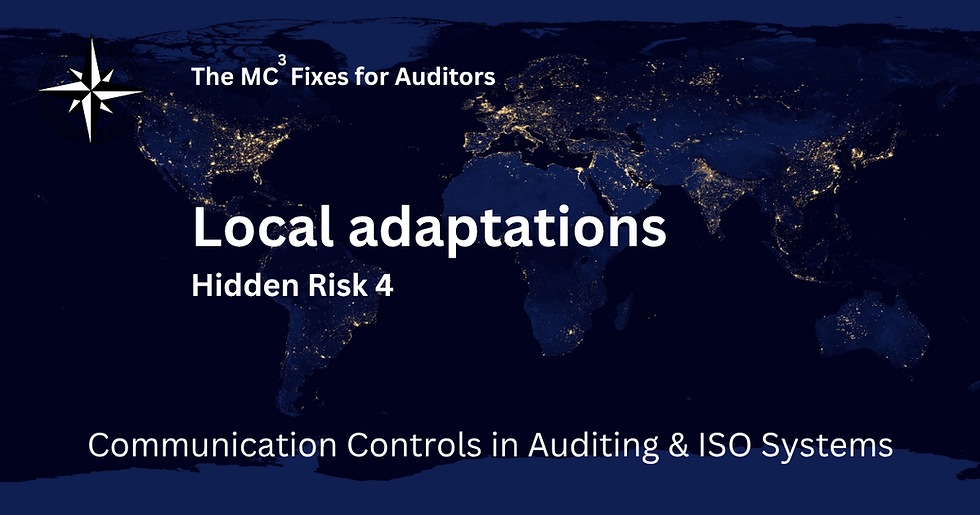4. When Everyone Says “We Do the Same” — But They Don’t.
- Ann Desseyn
- 3 days ago
- 2 min read

One of the most subtle challenges in multilingual auditing is the illusion of alignment. Across global teams, people often use identical wording to describe processes that are, in reality, executed very differently.
This phenomenon — false alignment — is incredibly common, especially in organisations where multiple regions must “speak the same corporate language.” Ironically, the more harmonised the vocabulary becomes, the easier it is for auditors to miss what is actually happening on the ground.
Why False Alignment Happens
Global teams often want to appear unified, cooperative, and compliant. As a result, their language converges even when their practices don’t.
1. “We do the same” is used to avoid conflict
Auditees may echo corporate terminology rather than describe local practice accurately. In cultures where contradiction is considered impolite or risky, people default to agreement — even when execution differs.
2. Local adaptations drift away from the global procedure
Over time, teams adjust processes to suit workload, staffing, resource constraints, or regional norms. These micro-adjustments compound, creating meaningful variance behind a façade of standardisation.
3. Shared wording hides non-shared behaviour
Global organisations invest heavily in unified language: policies, templates, training, and communications. The problem? Identical wording does not guarantee identical interpretation or action.
When two teams use the same phrases but mean different things, false alignment becomes invisible — unless the auditor knows where to look.
Why This Is a Major Audit Risk
False alignment quietly undermines audit reliability in several ways:
Auditors assume consistency where there is none
The gap between documented and actual practice widens
NCRs appear (or disappear) inconsistently across regions
Root causes become harder to isolate
Cross-site comparisons become misleading
Corporate oversight gains a false sense of security
A team that sounds aligned may be operating very differently from its counterparts, especially across language and cultural boundaries.
The Auditor’s Blind Spot
In multilingual environments, auditors often place too much trust in verbal sameness.
If the terminology matches the procedure, the process is assumed aligned.
But global teams are exceptionally good at mirroring the “correct” vocabulary. This creates a surface-level compliance narrative that hides the real operational landscape.
Unless the auditor validates the execution — not just the explanation — the risk goes undetected.
What Auditors Should Do Immediately
To uncover divergence masked by shared language, auditors must shift from statements to demonstration.
Ask for walk-through evidence
Not:“Do you follow the same process as the global procedure?”
But:“Show me how you complete this step, from start to finish.”
Walk-throughs expose practical drift, undocumented shortcuts, and tacit variations that verbal descriptions conceal. This single technique reveals false alignment faster than any interview question.
The Insight
Global organisations often sound aligned. But alignment isn’t in the wording — it’s in the execution.
Hidden Risk #4 reminds auditors that multilingual environments amplify the difference between what people say and what people do. Real alignment can only be verified through evidence, not vocabulary.



